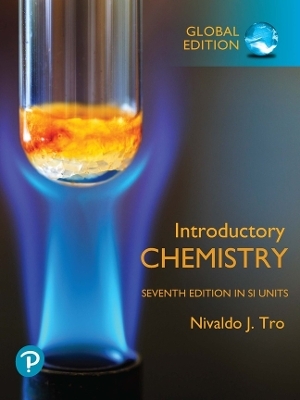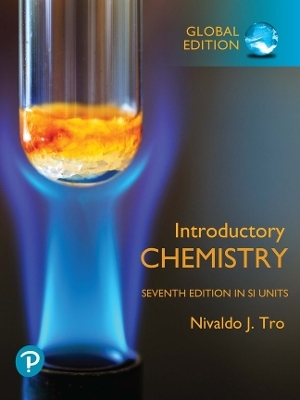
Principles of Statistical Physics
Wiley-VCH Verlag GmbH (Hersteller)
978-3-527-60808-9 (ISBN)
- Keine Verlagsinformationen verfügbar
- Artikel merken
Written for graduate or advanced students as well as for professionals in physics and chemistry, this book includes the fundamental concepts of statistical physics and physical kinetics. These concepts relate to a wide range of physical objects, such as liquids and solids, gases and plasmas, clusters and systems of complex molecules. The book analyzes various structures of many - particle systems, such as crystal structures, lamellar structures, fractal aggregates and fractal structures, while comparing different methods of description for certain systems and phenomena. Developed from a lecture course on statistical physics and kinetic theory of various atomic systems, the text provides a maximum number of concepts in the simplest way, based on simple problems and using various methods.
Boris M. Smirnov received his PhD in physics from Leningrad State University in 1968. After working in different research positions, he finally accepted a post as head of one of the divisions of the Institute for High Temperatures at the Russian Academy of Sciences in Moscow in 1986. Professor Smirnov is the author and co-author of approximately 30 books, among them "Physics of Ionized Gases", published by Wiley-VCH in 2001, and 300 research articles in plasma physics, atomic physics, and atomic clusters. He is Vice Chairman of the National Council for Low Temperature Plasma and Chairman of a Section on Elementary Processes in Plasma. Professor Smirnov's research interests focus on Plasma Physics and Technology, Cluster Physics, Fractal Systems and Nanostructures, and the Physics of Ball Lightning.
Preface.1 Introduction.I Statistical Physics of Atomic Systems.2 Basic Distributions in Systems of Particles.2.1 The Normal or Gaussian Distribution.2.2 Specifics of Statistical Physics.2.3 Temperature.2.4 The Gibbs Principle.2.5 The Boltzmann Distribution.2.6 Statistical Weight, Entropy and the Partition Function.2.7 The Maxwell Distribution.2.8 Mean Parameters of an Ensemble of Free Particles.2.9 Fermi-Diracand Bose-Einstein Statistics.2.10 Distribution of Particle Density in External Fields.2.11 Fluctuations in a Plasma.3 Bose-Einstein Distribution.3.1 Laws of Black Body Radiation.3.2 Spontaneous and Stimulated Emission.3.3 Vibrations of Diatomic Nuclei.3.4 Structures of Solids.3.5 Structures of Clusters.3.6 Vibrations of Nuclei in Crystals.3.7 Cluster Oscillations.3.8 Debye Model.3.9 Distributions inMolecular Gas.3.10 Bose Condensation.3.11 Heliumat Low Temperatures.3.12 Superfluidity.4 Fermi-Dirac Distribution.4.1 Degenerate Electron Gas.4.2 Plasma of Metals.4.3 Degenerate Electron Gas in a Magnetic Field.4.4 Wigner Crystal.4.5 The Thomas-Fermi Model of the Atom.4.6 Shell Structure of Atoms.4.7 Sequence of Filling of Electron Shells.4.8 The Jellium Model of Metallic Clusters.4.9 Shell Structure of Clusters.4.10 Clusters with Pair Interaction of Atoms as Fermi Systems.4.11 Partition Function of a Weakly Excited Cluster.5 Equilibria Between States of Discrete and Continuous Spectra.5.1 The Saha Distribution.5.2 Heat Capacityof Ionized Gases.5.3 Ionization Equilibrium for Metallic Particles in a Hot Gas.5.4 Thermoemission of Electrons.5.5 Autoelectronand Thermo-autoelectron Emission.5.6 Dissociative Equilibrium in Molecular Gases.5.7 Formation of Electron-Positron Pairs in a Radiation Field.II Equilibrium and Excitation of Atomic Systems.6 Thermodynamic Values and Thermodynamic Equilibria.6.1 Entropy as a Thermodynamic Parameter.6.2 First Law of Thermodynamics.6.3 Joule-Thomson Process.6.4 Expansion of Gases.6.5 CarnotCycle.6.6 Entropyof anIdealGas.6.7 Second Law of Thermodynamics.6.8 Thermodynamic Potentials.6.9 Heat Capacities.6.10 Equilibrium Conditions.6.11 ChemicalPotential.6.12 Chemical Equilibrium.7 Equilibrium State of Atomic Systems.7.1 Criterion of the Gaseous State.7.2 Equation of the Gas State.7.3 Virial Theorem.7.4 The State Equation for an Ensemble of Particles.7.5 System of Repulsing Atoms.7.6 Vander Waals Equation.7.7 Liquid-Gas Equilibrium.7.8 The Equation of the Solid State.7.9 Lennard-Jones Crystals and the Character of Interactions in Solid Rare Gases.7.10 Equilibrium Between Phases in Rare Gases.8 Thermodynamics of Aggregate States and Phase Transitions.8.1 Scaling for Dense and Condensed Rare Gases.8.2 PhaseTransitionsat High Pressures and Temperatures.8.3 Scaling for Molecular Gases.8.4 Two-state Approximation for Aggregate States.8.5 Solid-Solid Cluster Phase Transition.8.6 Configuration Excitation of a Large Cluster.8.7 Lattice Model for Phase Transition.8.8 Lattice Model for Liquid State of Bulk Rare Gases.8.9 Chemical Equilibria and Phase Transitions.9 Mixtures and Solutions.9.1 Ideal Mixtures.9.2 Mixing of Gases.9.3 The Gibbs Rule for Phases.9.4 Dilute Solutions.9.5 Phase Transitions in Dilute Solutions.9.6 Lattice Model for Mixtures.9.7 Stratification of Solutions.9.8 Phase Diagrams of Binary Solutions.9.9 Thermodynamic Parameters of Plasma.9.10 Electrolytes.10 Phase Transition in Condensed Systems of Atoms.10.1 Peculiarities of the Solid-liquid Phase Transition.10.2 Configuration Excitation of a Solid.10.3 Modified Lattice Model for Configuration Excitation of a Bulk System of Bound Atoms.10.4 Liquid State of Rare Gases as a Configurationally Excited State.10.5 The Role of Thermal Excitation in the Existence of the Liquid State.10.6 Glassy States and Their Peculiarities.III Processes and Non-equilibrium Atomic Systems.11 Collision Processes Involving Atomic Particles.11.1 Elementary Collisions of Particles.11.2 Elastic Collisions of Particles.11.3 Hard Sphere Model.11.4 Cross Section of Capture.11.5 Liquid Drop Model.11.6 Association of Clusters in Dense Buffer Gas.11.7 The Resonant Charge Exchange Process.11.8 The Principle of Detailed Balance for Direct and Inverse Processes.11.9 Three-body Processes and the Principle of Detailed Balance.11.10 The Principle of Detailed Balance for Processes of Cluster Growth.12 Kinetic Equation and Collision Integrals.12.1 The Boltzmann Kinetic Equation.12.2 Collision Integral.12.3 Equilibrium Gas.12.4 The Boltzmann H-Theorem.12.5 Entropyand Information.12.6 The Irreversibility of the Evolution of Physical Systems.12.7 Irreversibility and the Collapse of Wave Functions.12.8 Attractors.12.9 Collision Integral for Electrons in Atomic Gas.12.10 The Landau Collision Integral.12.11 Collision Integral for Clusters in Parent Vapor.13 Non-equilibrium Objects and Phenomena.13.1 Non-equilibrium Molecular Gas.13.2 Violation of the Boltzmann Distribution Due toRadiation.13.3 Processes in Photoresonant Plasma.13.4 Equilibrium Establishment for Electrons in an Ideal Plasma.13.5 Electron Drift in a Gas in an External Electric Field.13.6 Diffusion Coefficient of Electrons in aGas.13.7 Distribution Function of Electrons in a Gas in an External Electric Field.13.8 Atom Excitation by Electrons in a Gas in an Electric Field.13.9 Excitation of Atoms in Plasma.13.10 Thermal Equilibrium in a Cluster Plasma.IV Transport Phenomena in Atomic Systems.14 General Principles of Transport Phenomena.14.1 Types of Transport Phenomena.14.2 Diffusion Motion of Particles.14.3 The Einstein Relation.14.4 Heat Transport.14.5 Thermal Conductivity Due to Internal Degrees of Freedom.14.6 Momentum Transport.14.7 Thermal Conductivity of Crystals.14.8 Diffusion of Atoms in Condensed Systems.14.9 Diffusion of Voids as Elementary Configuration Excitations.14.10 Void Instability.14.11 Onsager Symmetry of Transport Coefficients.15 Transport of Electrons in Gases.15.1 Conductivity of Weakly Ionized Gas.15.2 Electron Mobility in a Gas.15.3 Conductivity of Strongly Ionized Plasma.15.4 Thermal Diffusion of Electrons in a Gas.15.5 Electron Thermal Conductivity.15.6 The Hall Effect.15.7 Deceleration of Fast Electrons in Plasma.16 Transport of Electrons in Condensed Systems.16.1 Electron Gas of Metals.16.2 Electrons in a Periodical Field.16.3 Conductivity of Metals.16.4 Fermi Surface of Metals.16.5 Drift of an Excess Electron in Condensed Systems.16.6 The Tube Character of Electron Drift in Condensed Inert Gases.16.7 Electron Mobility in Condensed Systems.17 Transport of Ions and Clusters.17.1 Ambipolar Diffusion.17.2 Electrophoresis.17.3 Macroscopic Equation for Ions Moving in Gas.17.4 Mobility of Ions.17.5 Mobility of Ions in Foreign Gas.17.6 The Chapman-Enskog Method.17.7 Mobility of Ions in the Parent Gas.17.8 Mobility of Ions in Condensed Atomic Systems.17.9 Diffusion of Small Particles in Gas or Liquid.17.10 Cluster Instability.V Structures of Complex Atomic Systems.18 Peculiarities of Cluster Structures.18.1 Clusters of Close-packed Structure with a Short-range Interaction BetweenAtoms.18.2 Energetics of Icosahedral Clusters.18.3 Competition of Cluster Structures.18.4 Configuration Excitation of Clusters.18.5 Electron Energy Surface of Three Hydrogen Atoms.18.6 Peculiarity of the Potential Energy Surface for Ensembles of Bound Atoms.19 Structures of Bonded Large Molecules.19.1 Structures of Atomic and Molecular Systems.19.2 Solutions of Amphiphiles.19.3 Structures of Amphiphilic Molecules.19.4 Polymers.19.5 Gels.19.6 Charging of Particles in Suspensions.19.7 Associationin Electric Fields and Chain Aggregates.20 Fractal Systems.20.1 Fractal Dimensionality.20.2 Fractal Aggregates.20.3 Fractal Objects Similar to Fractal Aggregates.20.4 Percolation Clusters.20.5 Aerogel.20.6 Fractal Fiber.VI Nucleation Phenomena.21 Character of Nucleation in Gases and Plasma.21.1 Peculiarities of Condensation of Supersaturated Vapor.21.2 Nuclei of Condensation.21.3 Instability of Uniform Nucleating Vapor.21.4 Classical Theory of Growth of Liquid Drops in Supersaturated Vapor.21.5 NucleationatStrongSupersaturation.21.6 Nucleation under Solid-Liquid Phase Transition.22 Processes of Cluster Growth.22.1 Mechanisms of Cluster Growth in Gases.22.2 Kinetics of Cluster Coagulation.22.3 The Coalescence Stage of Cluster Growth.22.4 Growth of Grains in a Solid Solution.22.5 Character of Growth of Charged Clusters in a Plasma.22.6 Peculiarities of Nucleation on Surfaces.23 Cluster Growth in Expanding Gases and Plasmas.23.1 Transformation of Atomic Vapor in Clusters in an Expanding Gas.23.2 Heat Regime of Cluster Growth in Expanding Gas.23.3 Mechanisms of Nucleation in Free Jet Expansion.23.4 Nucleation in Free Jet Expansion in Pure Gas.23.5 Hagena Approximation for Nucleation Rate.23.6 Character of Nucleation in Pure Gas.23.7 Instability of Clusters in a Nonhomogeneous Vapor.24 Conclusions.Appendix.A Physical Constants and Units.A.1 Some Physical Constants.A.2 Conversion Factors for Energy Units.A.3 Numerical Coefficients in Some Relationships of Physics.B Physical Parameters in the Form of the Periodical Table of Elements.B.1 Mobilities of Atomic Ions in Parent Gases.B.2 Ionization Potentials for Atoms and Their Ions.B.3 Electron Binding Energies in Negative Ions of Atoms.B.4 ParametersofDiatomicMolecules.B.5 Parameters of Positively Charged Diatomic Molecules.B.6 Parameters of Negatively Charged Diatomic Molecules.B.7 Cross Sections of Resonant Charge Exchange.B.8 Parameters of Evaporation for Metallic Liquid Clusters.B.9 Parameters of Metals at RoomTemperatures.B.10 Parameters of Crystal Structures of Elements at Low Temperatures.References.Index.
| Verlagsort | Weinheim |
|---|---|
| Sprache | englisch |
| Maße | 181 x 243 mm |
| Gewicht | 1034 g |
| Themenwelt | Naturwissenschaften ► Chemie |
| Naturwissenschaften ► Physik / Astronomie | |
| ISBN-10 | 3-527-60808-7 / 3527608087 |
| ISBN-13 | 978-3-527-60808-9 / 9783527608089 |
| Zustand | Neuware |
| Haben Sie eine Frage zum Produkt? |
aus dem Bereich


